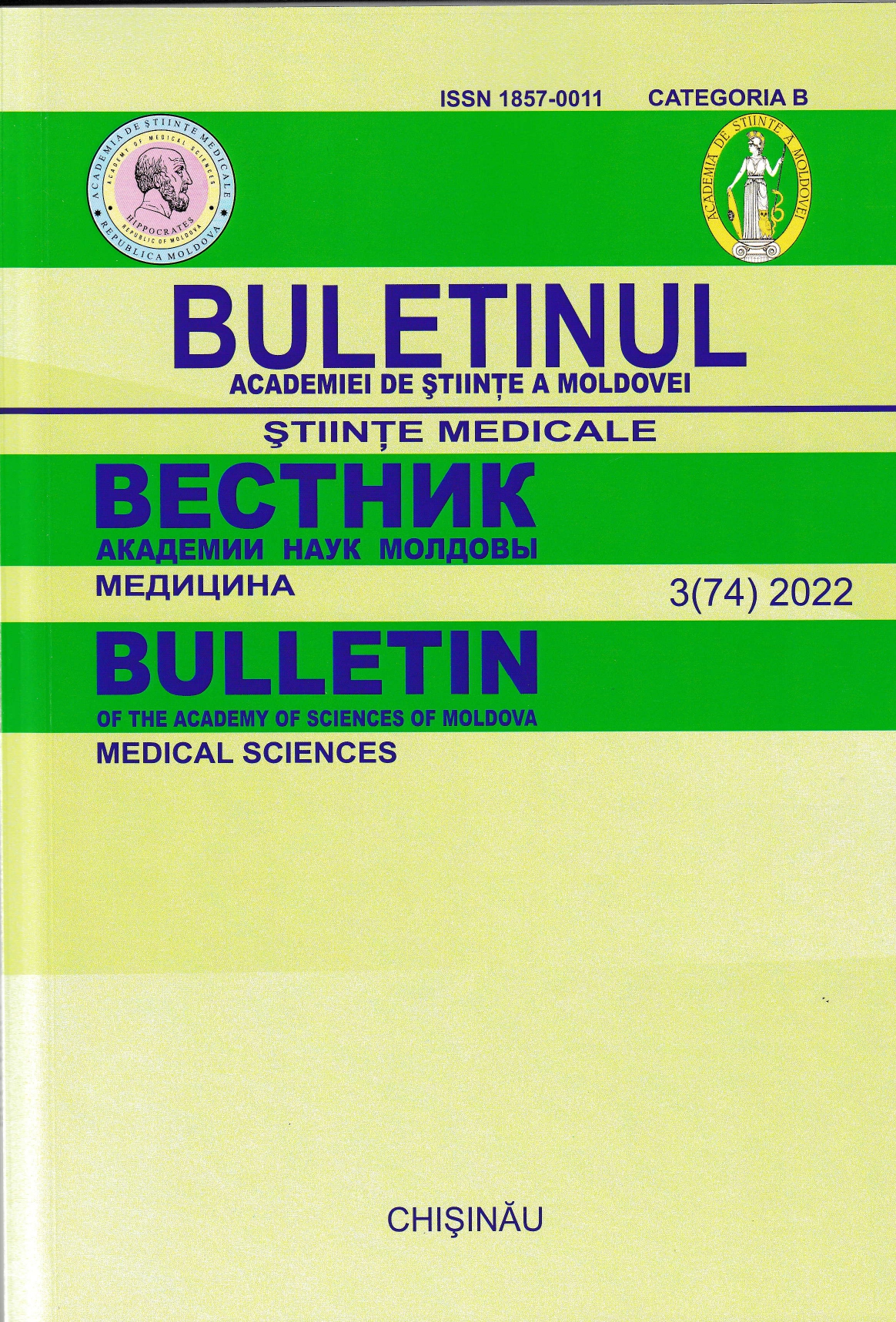Ebstein anomaly. Retrospective study.
DOI:
https://doi.org/10.52692/1857-0011.2022.3-74.48Keywords:
Ebstein anomaly, right atrium, right ventricle, tricuspid valveAbstract
Ebstein anomaly is a congenital heart malformation of the tricuspid valve and right ventricle. Surgical correction of Ebstein’s anomaly improves functional class and exercise tolerance, eliminates intracardiac right-to-left shunting (if present), and reduces the incidence of supraventricular tachyarrhythmias [3, 4, 6]. Due to the degree of variability of Ebstein’s Anomaly, correction is based on anatomical factors. In the case of unfavorable anatomical conditions, the replacement of the tricuspid valve is resorted to [3, 8]. The application of bidirectional cavopulmonary anastomosis is reserved for patients with poor right ventricular function [6, 9, 10]. Currently, overall early mortality after surgical correction in children and adults has decreased to less than 3% in experienced centers [4]. Surgical treatment of the symptomatic neonate remains a significant challenge, with approaches including either a biventricular correction or a univentricular correction. The given study is retrospective and reports the data on the incidence of the types according to the Carpentier classification, the severity and the surgical procedure applied for the correction of the anomaly [1, 9].
References
John M. Stulak, Joseph A. Dearani –Surgical Managment of Ebstein Anomaly. Semin Thorac Cardiovasc Surg Pediatr Card Surg Annu. 2007;105-11.
Irving L.Managment of Ebstein’s anomaly. Ann Cardiothorac Surg. 2017 May; 6(3): 266-269.
Christine H. Attenhofer Jost, Heidi M. Connolly, Joseph A. Dearani, William D. Edwards, Gordon K. Danielson Ebstein’s Anomaly. Circulation. 2007; 115:277-285.
van Son JA, Konstantinov IE, Zimmermann V. Wilhelm Ebstein and Ebstein’s malformation. Eur J Cardiothorac Surg 2001;
Anderson KR, Lie JT. The right ventricular myocardium in Ebstein’s anomaly: a morphometric histopathologic study. Mayo Clin Proc 1979;
Li B, Sun HS, Pan SW, et al. Outcomes of Ebstein’s Anomaly Patients Treated with Tricuspid Valvuloplasty or Tricuspid Valve Replacement: Experience of a Single Center. Chin Med J (Engl) 2018;
Delhaas T, Sarvaas GJ, Rijlaarsdam ME, et al. A multicenter, long-term study on arrhythmias in children with Ebstein anomaly. Pediatr Cardiol 2010;
Said SM, Burkhart HM, Schaff HV, et al. When should a mechanical tricuspid valve replacement be considered J Thorac Cardiovasc Surg 2014;
Dearani JA, Said SM, Burkhart HM, et al. Strategies for tricuspid re-repair in Ebstein malformation using the cone technique. Ann Thorac Surg 2013;
Reemtsen BL, Fagan BT, Wells WJ, et al. Current surgical therapy for Ebstein anomaly in neonates. J Thorac Cardiovasc Surg 2006;
Зиньковский М.Ф., Возианов А.Ф. Врожденные пороки сердца. 2008.
Downloads
Published
License
Copyright (c) 2022 Bulletin of the Academy of Sciences of Moldova. Medical Sciences

This work is licensed under a Creative Commons Attribution 4.0 International License.



